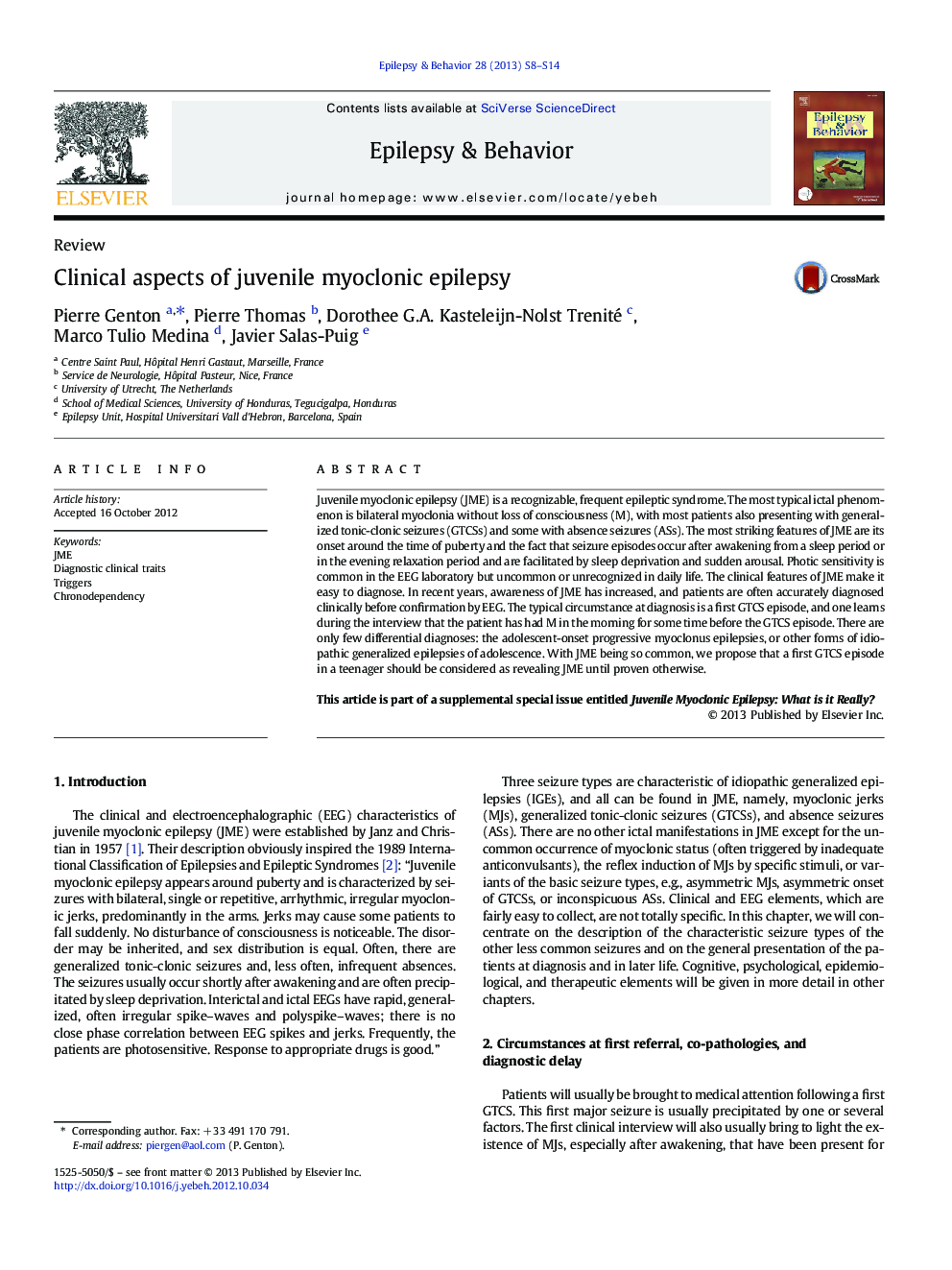| Article ID | Journal | Published Year | Pages | File Type |
|---|---|---|---|---|
| 3049732 | Epilepsy & Behavior | 2013 | 7 Pages |
Juvenile myoclonic epilepsy (JME) is a recognizable, frequent epileptic syndrome. The most typical ictal phenomenon is bilateral myoclonia without loss of consciousness (M), with most patients also presenting with generalized tonic-clonic seizures (GTCSs) and some with absence seizures (ASs). The most striking features of JME are its onset around the time of puberty and the fact that seizure episodes occur after awakening from a sleep period or in the evening relaxation period and are facilitated by sleep deprivation and sudden arousal. Photic sensitivity is common in the EEG laboratory but uncommon or unrecognized in daily life. The clinical features of JME make it easy to diagnose. In recent years, awareness of JME has increased, and patients are often accurately diagnosed clinically before confirmation by EEG. The typical circumstance at diagnosis is a first GTCS episode, and one learns during the interview that the patient has had M in the morning for some time before the GTCS episode. There are only few differential diagnoses: the adolescent-onset progressive myoclonus epilepsies, or other forms of idiopathic generalized epilepsies of adolescence. With JME being so common, we propose that a first GTCS episode in a teenager should be considered as revealing JME until proven otherwise.This article is part of a supplemental special issue entitled Juvenile Myoclonic Epilepsy: What is it Really?
